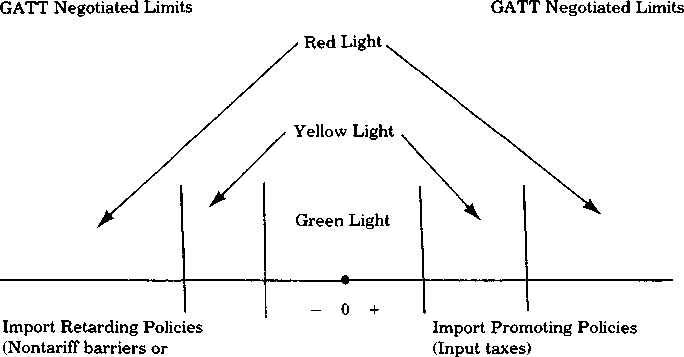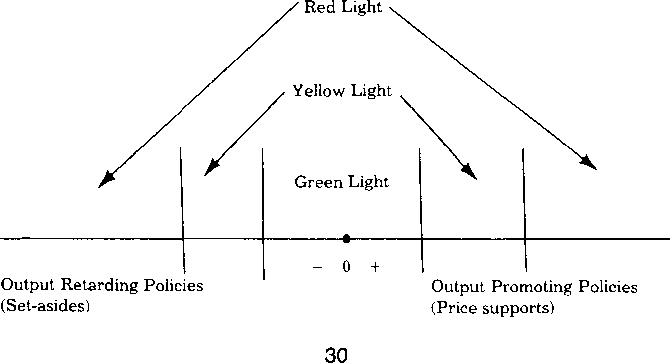Figure 2. Import Distorting Policies

tariffs)
tions from import-promoting to import-retarding policies (Runge,
1990). In principle, either type of distortion can be expressed as a
tariff equivalent, with import promoting policies defined as a nega-
tive tariff. Once again, the issue is which policies are determined to
be definitely out-of-bounds (“Red Light”), which are undesirable
and to be phased out over time (“Yellow Light”) and which are ac-
ceptable (“Green Light”).
Domestic Production Distorting Policies
Finally, there are those policies affecting domestic production. As
shown in Figure 3, such policies may be negative, such as U.S. and
Figure 3. Output Distorting Policies

More intriguing information
1. Psychological Aspects of Market Crashes2. THE CO-EVOLUTION OF MATTER AND CONSCIOUSNESS1
3. The Triangular Relationship between the Commission, NRAs and National Courts Revisited
4. CREDIT SCORING, LOAN PRICING, AND FARM BUSINESS PERFORMANCE
5. Models of Cognition: Neurological possibility does not indicate neurological plausibility.
6. Gender stereotyping and wage discrimination among Italian graduates
7. The Complexity Era in Economics
8. The name is absent
9. O funcionalismo de Sellars: uma pesquisa histδrica
10. Reputations, Market Structure, and the Choice of Quality Assurance Systems in the Food Industry